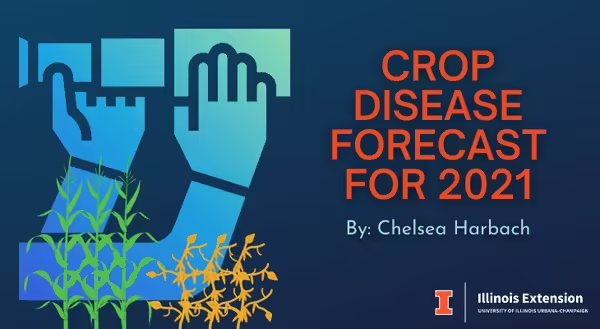
Much of the 2020 crop has just been harvested, but it's never too early to discuss crop diseases in the forecast for 2021.
Did you come here thinking you might actually get some idea of what diseases will prove problematic next year? Good. Am I going to give you specific diseases for which to watch out? No. But I do want to tell you about a concept that will make disease prediction in 2021 easier: the plant disease triangle.
Why do I want to tell you about the disease triangle? I have seen some ideas floating around on the Internet that you can predict plant disease outbreaks by merely testing your field for pathogens. Oh, if only it were that easy to predict plant disease! Sadly, it is not. But with a basic understanding of the plant disease triangle and crop scouting, you can anticipate disease outbreaks in your crops during the growing season.
The plant disease triangle is one of the most fundamental concepts in the study of plant diseases, and it is really quite simple. As a triangle, it has three components: 1) virulent pathogen (i.e., a pathogen able to cause disease), 2) susceptible host plant, and 3) an environment favorable to disease development. These are the three things that need to be present in the same place and time for a plant disease to develop. Let's talk about why using a prominent example in corn.
Tar spot of corn first appeared in the United States in 2015 and, in 2018, reached epidemic proportions for much of the upper Midwest. This is a disease that needs a living host to grow and reproduce (and obligate parasite). However, the fungus can overwinter in debris and residue within the black spots (stroma) that form on the leaves. This provides inoculum for subsequent years of infection. In other words, you have a virulent pathogen present in your fields if you have ever had tar spot affect your corn.
Now, if you rotate to soybeans the following year, soybean is not a susceptible host, so there will be no threat of tar spot developing in your soybean field. If you plant corn-on-corn, the amount of corn residue and inoculum is higher, which results in two conditions of the disease triangle being present at the same place and time- a virulent pathogen and a susceptible host (corn). However, without the disease triangle's last condition, a favorable environment, tar spot will not appear.
So, rather than trying to predict diseases that will affect your crops in 2021, take a look back at the diseases that have limited crop yields in the past. Understand whether the pathogens that cause disease can overwinter in your fields. If they can overwinter, consider integrated pest management practices to mitigate the risk of a disease outbreak, should you plant a susceptible host, or have favorable weather conditions. One of those integrated pest management practices includes changing the host susceptibility by either selecting more disease-tolerant or resistant cultivars of a host or rotating to a nonhost. Host susceptibility (cultivar selection) is one thing you can completely control and is generally a critical first step to an integrated pest management approach.